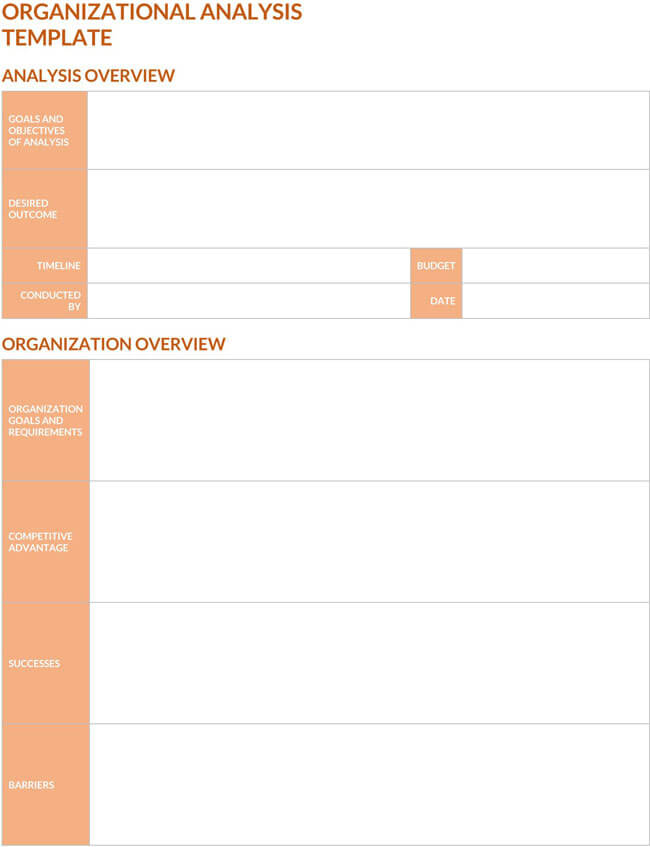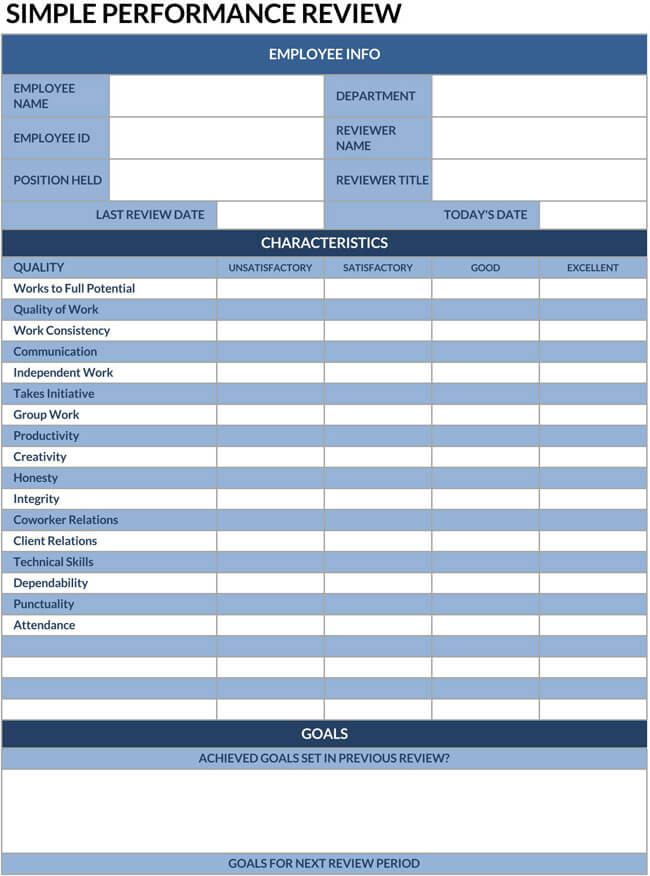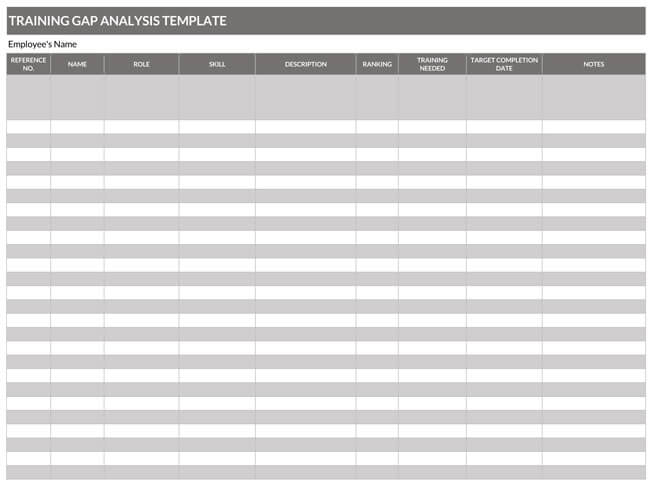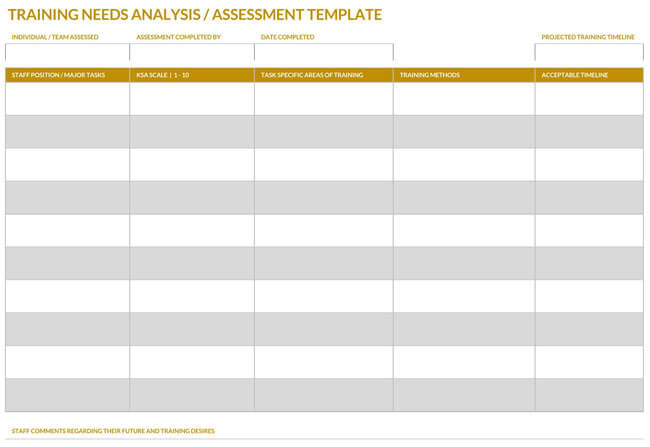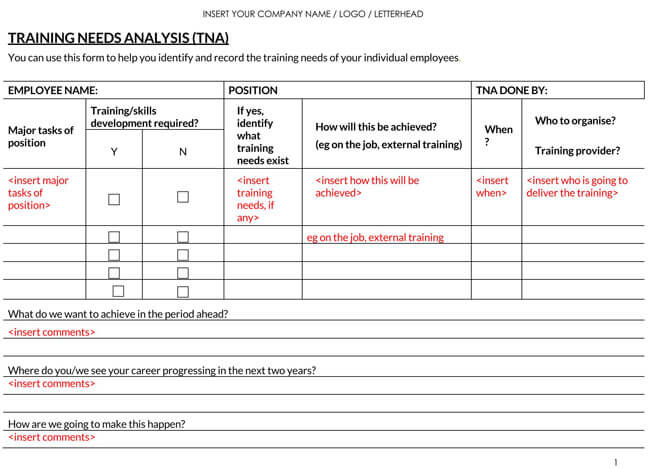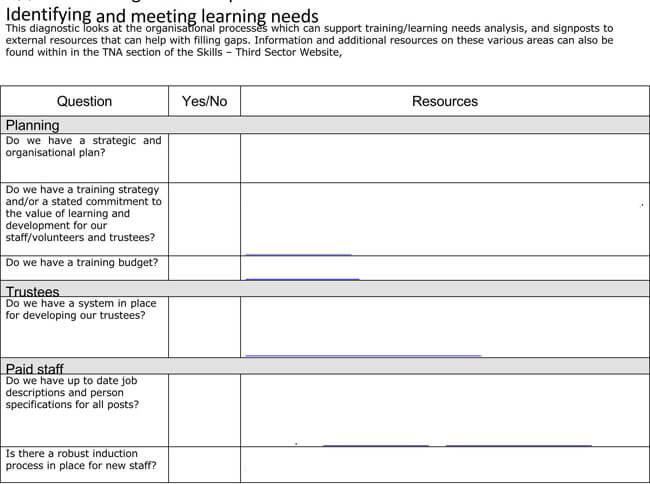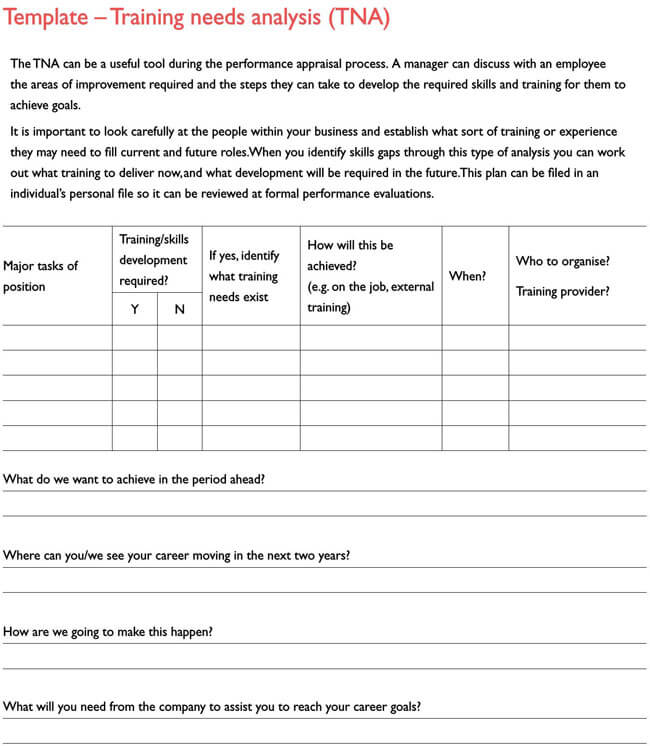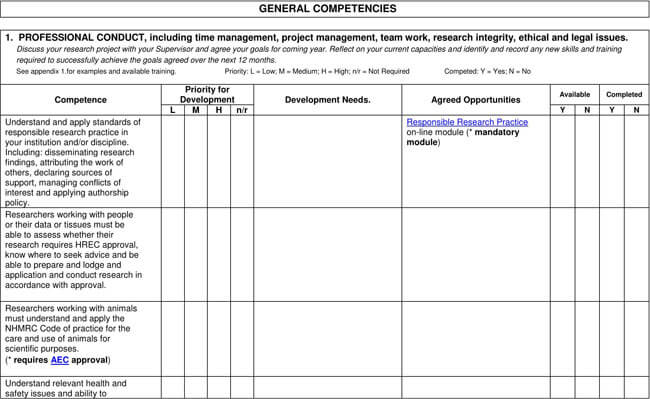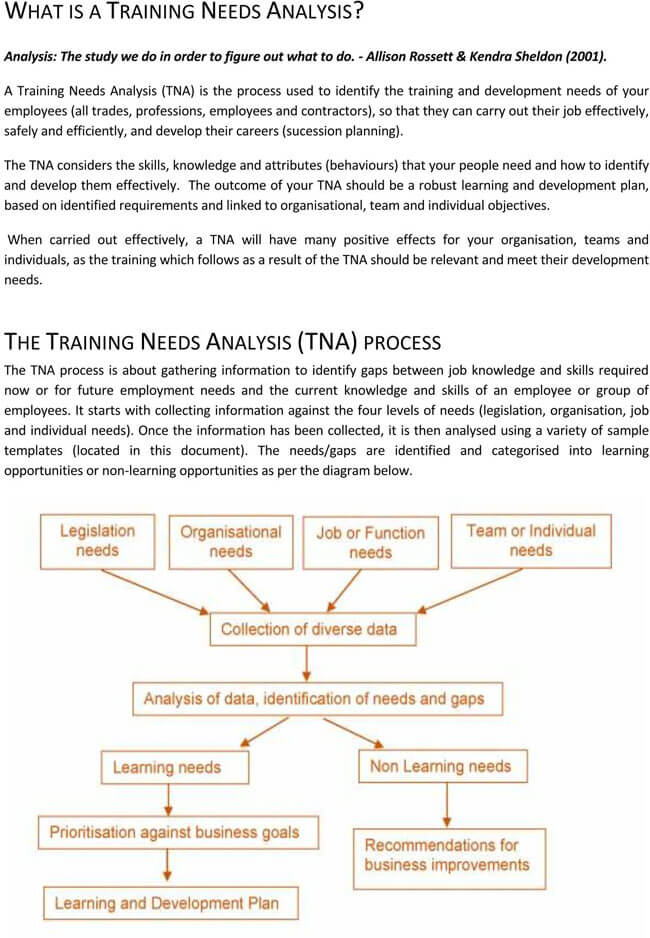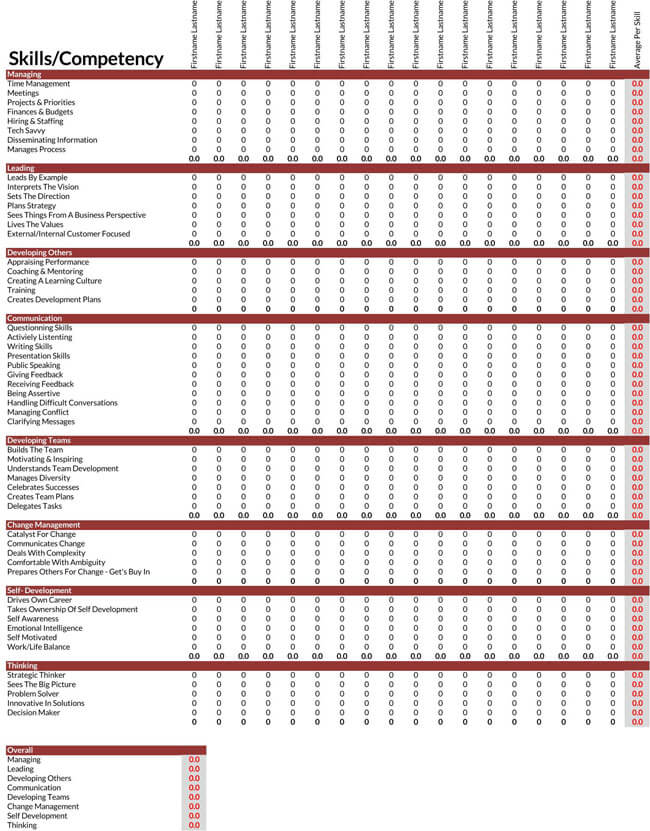In the current competitive work environment, every company is doing its best to upscale its production by making its workers more competent and qualified. More often, a training need analysis looks into the whole operation of a workforce to determine their areas of underperformances. Once these shortfalls are identified, training need analysis then comes in handy to tailor a training process that would best improve those shortfalls.
Training needs analysis(TNA) is a process which companies use to identify areas or type of training that their employee needs to become more productive.
Generally, a training needs analysis should be done before subjecting employees to any form of training. A training need analysis will help you identify where you need to start and the direction you need to go while offering training to employees.
A training needs analysis will make your training more effective, efficient, and in line with the company’s goals.
Types of Training Need Analysis
There are various types of training need analysis, all of which are important for different situations. Some of the common types of TNA you need to be aware of are explained below;
Organizational analysis
Organizational analysis majorly looks into how organization’s workforce can be better trained to improve their productivity. The analysis often assesses a company’s goals, objectives, and strategies. Also, it looks at things that may affect an organization from realizing these goals.
Personal analysis
Personal analysis tends to look at individual persons training needs. In other words, it takes a bird view of the company’s workforce and their level of knowledge to identify who is eligible for training.
Work/task analysis
It focuses on the job description and the requirements needed to perform the said task. With such information, the analysis helps develop training that is relevant to that specific task.
Performance analysis
The analysis tends to measure the standards performed by individual employees. In case the employee’s work falls below the company standards, then the training should be able to improve this situation.
Content analysis
This analysis lays emphasis on documents such as procedures, guidelines, and other regulatory documents. It tends to investigate whether the contents of the documents are in light of the company objectives. It makes more sense if the content of documents does not contradict work details.
Training suitability analysis
The analysis will test whether the training will be a necessary requirement when solving the company’s problems. In as much as training solves lots of work-related problems, this isn’t always the case every day. Sometimes it can bring more damage than the solution.
Cost-benefit analysis
This analysis will test whether having a training needs analysis will bring value to the company. In other words, it determines whether the training will yield good results, comparing both the prospected costs and benefits.
Performing a Training Need Analysis
The training needs analysis for an organization and individuals is quite similar. However, when it comes to individual training needs analysis, the job behavior of an individual is often analyzed separately using the inventory task approach. Many companies are often reluctant to perform a training need analysis because it looks overwhelming.
The following is a step-by-step guide that will help ease the process should you find yourself stuck.
Develop a company profile
First, you need to create a company profile to help you map out the way forward. That’s said, you need to identify various job positions that exist in a company. Also, know what skills, experience, abilities, and knowledge is required of each job position.
Ask yourself the big question
While coming up with a training strategy, you will probably need to evaluate the idea on an annual basis. Through this process, lots of questions will come crossing your mind. Note that the more proficient you will come closer to answering these questions, the more efficient your training need analysis will be.
For example,
What is your corporate goal?
What are your training goals?
What is your contemporary or expected Return On Investment (ROI)?
Do you have the right team?
Answer the above questions so before a training needs analysis to have a better understanding of which way to move forward. This question will probably seek to confirm whether you have the right employees with the necessary skills.
Set the goals and skills required
Once you’ve created the company profile, you need to break down your goals you would want to achieve at the end of the training. Be sure to include what employees need to know and how. Also, the goals set should be smart and match the interest of the company or organization. It is true the current workplace requires employees to be independent thinkers. But you can only achieve this if your team have the necessary skills, knowledge and abilities.
Some of the skills required by every organization are;
- Establishing objectives
- Risk management
- Communication skills
- Decision-making abilities
- Customer focus and service
- Fiscal management
- Adaptability and Innovation skills
- Analytical skills
- Action orientation
- Business knowledge
- Coaching/employee development
- Leadership and teamwork skills
- Global perspective
- Interpersonal skills
- Persuasion and influence
- Planning and problem-solving
- Project management
- Result orientation
- Self-management
- Technology
Evaluate employee skills
Now you have your goals ready- that’s fine. But now, you need to start figuring out what your employees already know. Provide the employees with the chance to showcase what they know in their respective workplaces. This will help you identify gaps and plan for your training programs effectively. The skills of employees can be identified by their performances in each task assigned. Some of the common sources of performance data you can use include
- Performance appraisals
- Quotas met
- Performance measures
- Turnovers
- Shrinkage
- Leakage
- Spoilage
- Losses
- Accidents committed
- Safety incidents
- Grievances
- Absenteeism
- Units handled per day
- Units handled per week
- Returns
- Customer complaints
Talk to employees
In this step, you will create some time to talk with employees at their individual levels. Make sure you create a positive environment for communication to encourage feedback. One way of ensuring this is letting the employee know in advance of the intentions of your conversations. For example, you can tell them that you only intend to use their feedback for training purposes.
Talk to managers
Managers lie between the executive and the employees. Therefore, their input on the analysis is mandatory. Since managers understand their employees’ best, take time and have some conversations with them. Ask them what areas they need to be improved to add value to the company and which areas aren’t necessary.
Highlight the skill gap
After collecting all the data from both the managers and the employees, you need to analyze it paying more attention to the skill gap. The data at hand should give you a picture of where your employees are at as of the moment. Comparing that with where you would want them to be, you can easily identify where the gap is (if any).
Ensure compliance
Observing full compliance with the set regulations has been a challenge for many companies. However, it is important to note that failure to comply with policies can compromise the whole process. That’s said, make sure you adhere to things like mandatory training schedules, codes of conduct, and other training-related regulations.
Analyze training methods and materials
After you have identified what your employees need to know, you need to test what method will be suitable for training. Also, you need to see to it that there are enough resources to facilitate the training. Some of the common training materials include microlearning modules, experiential learning, geo-fenced learning, gamified assets
Make a checklist or model
Once you have noted down your training recommendations, it’s time you create a checklist that will help you select the right assessment method. This not only makes your stay organized but also helps you summarize your key points in a more understandable manner.
You can also develop a model where decisions made on training will purely depend on the available information. Depending on your preference, the model can either be in form of graphic representation or schematic. Note that the model should majorly purpose to guide the development of training curriculum or program. That’s said, you need to collect all the information on how a specific task is supposed to be performed. This will help you create a model that will work well for your training. Some of the best ways to get this information are through reviewing existing training relevant to the job or observing the experts, staff, and novices.
Look at your competition
Last but not least, you need to understand where you stand in the industry. By this, you can take a stretch and look at what your competitor is doing. Pay keen attention to their uniqueness, customer satisfaction and any other thing they are doing that lacks on your side. However, you need not to change your business model should you find your competitors doing a different thing.
Match your training to your needs
Here, you will ensure that your training directly corresponds to the needs of your company. Since your staff may have other things to do, you need to ensure they get the right training that suits them. Also, ensure you avoid being irrelevant or time wastage. Note that any activity that doesn’t match with the training will make your employees distracted or unfocused.
Develop recommendations
Once you have matched your training with the existing company needs and goals, you need to come up with recommendations. These recommendations will focus on addressing the problem at hand.
There are some recommendations you can think of:
- Offering training delivery methods
- Onboarding or off-boarding activities
- Learning gaps and their deficiencies
- New and trending events within your field.
- Updated or revised regulatory policies
- Any changes to improve the engagement of the employees
- Updates or changes that help reduce training costs
- Tracking and assessment programs
- Solving of accessibility issues
Different Methods of Training Need Analysis
There exist various methods of performing training rends analysis. Due to this diversity, a company can choose one method that best meets its objectives.
These methods include:
Questionnaires
The questionnaire method is often the most simple to use. It requires you to provide employees with questionnaire sheets for them to fill in what they feel training need to be conducted. In as much as it’s a good place to start with, questionnaires often give room for unreliable data.
Observations
Observation is another important method that can be used to identify training need analysis. However, for it to be effective, you need to conduct multiple and regular observations. Also, you need to make employees aware that the observations are done for training reasons and not any other reason whatsoever.
Examining work
Examining work comes in handy when determining whether the employee’s skills and experience match the allocated job position. Through this method, the manager can know whether the employee needs more training and on which specific area.
Assessments
Assessments help managers understand the knowledge of each employee in their respective areas of work. One best way to perform an assessment is by giving employees short multiple-choice questions to respond to. This will help determine areas that need further training.
Competitive analysis
This method tends to compare a company’s operation with that of the close competitors. Here, the manager will compare the number of sales, satisfaction rankings, and any other thing their competitors are doing better.
Records and reports
Records and reports tend to bring employees’ past achievements together. Also, it entails looking into the employee’s past history to determine areas of underperformance.
Consulting person in key positions
Finally, you can engage in conversation with people whom you feel knows the employees best. These may include the supervisors, human resources, or even colleague employees. These people should be in a position to know the individual capability of employees and areas that need improvement.
Should You Conduct a Training Needs Analysis?
Training need analysis is very important for any organization. If you are stuck on whether to conduct it,some convincing reasons why you should conduct it are mentioned here.
Training needs analysis helps you identify a gap within the workforce before it aggravates a larger problem. In other words, it helps you identify areas your employees are finding difficult to meet hence affecting productivity.
Before starting your yearly training program, you would want to know which areas to put the major focus on. A training needs analysis will help you areas of urgent need hence adequate planning. Having known the type of information to disseminate to your employees, the training need analysis will provide a correct direction to follow during the training.
A training need analysis helps you identify which training method should be opted and the specific area of knowledge and skills your employees need to be trained on to improve their productivity. Because of its ability to spot out areas of need, the analysis will help you narrow down to the specific training that will serve your interest most
One undeniable benefit of training is that it leads to performance improvement. But with training need analysis it becomes much more effective as it identifies employee’s weak points and works on improving them. Also, it measures the effectiveness of the past training was. That’s said, it leads to a higher return on investment (ROI).
Changes are always unavoidable in an organization. When they come, your employees will have to adapt to ensure continuity. However, to ensure a smooth and easy transition after the change, you need to first train your workers for them to catch up easily.
Obstacles During Training Needs Analysis
Of course, the process of doing a training need analysis will not come easy. According to experts, here are some common obstacles you are likely to face:
Assessment difficulty
One major obstacle most people face during training analysis is difficulty in achieving training effectiveness. More often, this obstacle is achieved by disconnect that occurs within organizational goals. Therefore, it’s always advised that people to first identify the desired outcome before settling on training activities. This can help target that need that requires improvement.
Management
The process of performing a training need analysis is often involving. It requires the participation of both the employees and the management. If the latter isn’t willing to participate fully, you are likely to find it rough. Managers will provide you with the necessary information you need for your analysis. Therefore, to keep them engaged, you need to make them understand the benefit of doing the process.
Time
One thing you need to understand before starting your training needs analysis is that it will require lots of time for it to be done properly. From preparing the training sessions, talking with employees and managers, and analyzing the feedback, it’s easier for you to feel wasted. However, you need to bear in mind that your first time will require more time. However, as you practice it more frequently, you will find it easier and less time-consuming.
New job rules
Usually, many people focus on preparing TNA for the existing job positions. However, as new job creations come along, it becomes much more frustrating. To avoid this, you need to know the direction in which the business will take. Then, you can think of other possible job positions should they be created in the future.
Relying on last year results
Again, many organizations tend to repeat the mistake of using data from TNA to formulate training for several years to come. What you need to know is that job role keep changing with time. Therefore, you need to ensure that you are working with up to date information as possible.
Not meeting your OKR
It is advisable that you use the current set of goals and OKRs when creating a training need analysis. Using a previous years data might sounds like an easy and tempting idea but, it will only give you an incorrect picture of the current affairs.
Not utilizing previous feedback
Once you’ve talked to employees and identified their feedback, it’s important that you act upon the feedback. Suppose they find the training useful, well and good. But if they identify areas for improvement, it is good that you create room for improvement.
Not having a firm process
This is another common obstacle among many people performing a TNA. When you are determined to do a training need assessment, make sure you be firm on it. Otherwise, you risk creating rooms for failure or underperformance.
Integrated approach
According to the research, organizations that stress new skills in job perspectives find integration with other organization processes much easier and efficient. Therefore, it is always recommended that you put new skills learned by employees into an organizational perspective.
Other Points to Consider
Before conducting a training need analysis, there are some fundamental factors you need to put into consideration. These include the workforce skills, their knowledge, and abilities.
Their explanation is given below;
Skills— play an important role in employees’ productiveness and efficiency. Before an employee can hire an employee, they need to ensure that the new hire has the right skills that match the job description.
Knowledge— is another important factor to consider when conducting a training need analysis is the level of knowledge your workforce possesses. Other than passion and energy, your employees should also be equipped with sufficient knowledge in order to perform their roles expectedly.
Abilities— is a factor that encompasses an employees’ capability to respond to various tasks. Amongst the top abilities, you need to pay attention to includes problem-solving and decision-making capabilities.
Free Templates
While creating a training needs assessment can be challenging, it shouldn’t be a cause for your worries. You can always download our free and easy-to-use templates to help you through. The templates will serve you get it right in the first place.
Frequently Asked Questions
What is a training need analysis?
A training needs analysis is a procedure that helps to locate where the gap exists when comparing an employee’s actual knowledge and the knowledge and skills you require.
Why is a training need analysis important?
Training need analysis is important because it helps an organization solve internal problems affecting its production. These problems often arise due to a lack of knowledge, skills, or attitudes.
How to conduct a training needs analysis?
A training need analysis can always be achieved using three simple steps. First, you need to identify the company goals and objectives. Second, you need to highlight the relevant job behaviors. This should then be followed with a definition of the required knowledge and skills. After that, you then proceed to train.
Conclusion
Training need analysis is an important tool that every organization should use before commencing any kind of training. It helps identify areas of weakness an employee may have hence improving them through training.
